An Itinerary to Discover the Harmonious Fusion of History, Taste and Beauty in This Enchanting Lombard City
Bergamo, a jewel set in the mountains of the Orobian Pre-Alps, offers a unique experience that combines history, culture and gastronomy. It is renowned for its rich culinary tradition, reflected in typical dishes that represent the essence of Italian cuisine. Polenta taragna, casoncelli alla bergamasca and torta Donizetti are just some of the delicacies that delight visitors as they discover the authentic flavors of the region.
But Bergamo is not only a paradise for lovers of good food; the city also boasts an extraordinary artistic and architectural heritage. From historic monuments such as Bergamo Cathedral and the Basilica of Santa Maria Maggiore to the striking Rocca that offers breathtaking panoramic views, every corner of the city tells a fascinating story. With its enchanting atmosphere and hidden treasures, Bergamo is a must-see destination for those who want to experience an unforgettable trip to discover the treasures of northern Italy. Let’s discover together the wonders of this multifaceted city!
The dishes of Bergamo’s culinary tradition
Bergamo boasts a rich culinary tradition that reflects its history and geography. Bergamo cuisine is characterized by hearty and tasty dishes typical of a mountainous and rural area.
Polenta Taragna, Bergamasque Rabbit and Braised Meat
One of the most famous dishes is undoubtedly polenta, which in Bergamo takes on a special version called polenta taragna. This variant is prepared by mixing cornmeal with buckwheat flour and enriched with Branzi or Taleggio cheese, which give the polenta a unique, creamy flavor. Polenta taragna is often served as a side dish with meat dishes, such as rabbit alla bergamasca, slowly stewed with white wine, herbs and spices, or braised beef, cooked in red wine.
Casoncelli and Scarpinocc
Another iconic dish from Bergamo is casoncelli alla bergamasca, a kind of ravioli filled with meat, breadcrumbs, cheese, eggs, and herbs, served with a sauce of butter, bacon, and sage. This dish perfectly represents the peasant tradition of the region, using simple but flavorful ingredients. No less important are scarpinocc, another variety of stuffed pasta, which differ from casoncelli in their shape and cheese filling.
Donizzetti Cake
As for desserts, one of the most famous is the Donizetti cake, dedicated to the famous Bergamasque composer Gaetano Donizetti. Legend says it was created at Rossini’s request to relieve Gaetano Donizetti’s love pains. The cook created a simple but delicious cake, enriched with candied fruit and Maraschino, which the composer loved and became his favorite dessert.
Polenta e Osei
Polenta e Osei is another must-have in the Bergamo tradition. Polenta, made with cornmeal, is a staple that can be accompanied by various sauces or condiments. In this sweet variant, the polenta is transformed into a sweet base that supports bird-shaped chocolates, creating a traditional dessert that captivates both for its aesthetics and taste.
Bergamaschi cured meats
During your trip to Bergamo, you cannot miss Bergamo’s cured meats, known for their high quality. Among the most delicious are salami, coppa, pancetta and bresaola, all prepared using traditional methods that bring out the authentic flavors of the region. These cured meats are perfect to enjoy as an appetizer or as an accompaniment to local cheeses.
Bergamasque Cheeses: Taleggio, Stracchino and Branzi
Speaking of local cheeses, Bergamo is famous for some of the most delicious varieties you can find in Italy. Taleggio cheese, soft and creamy, offers a distinctive flavor that will win over any cheese lover. Stracchino cheese, originally named for the fatigue of the cows during transhumance, has a sweet at first and savory-amorable taste, ideal for dishes such as lasagna or polenta bergamasca. Branzi is a typical cheese from the Brembana Valley, known for its strong flavor and versatility in cooking, perfect for enriching traditional Bergamo dishes such as polenta taragna.
Bergamo, with its typical dishes and gastronomic excellence, is an essential stop on any trip to discover Italian flavors. Its cuisine, made of genuine ingredients and traditional recipes, tells the story of the history and culture of this fascinating Lombard city, making it a perfect destination for a trip dedicated to taste and tradition.
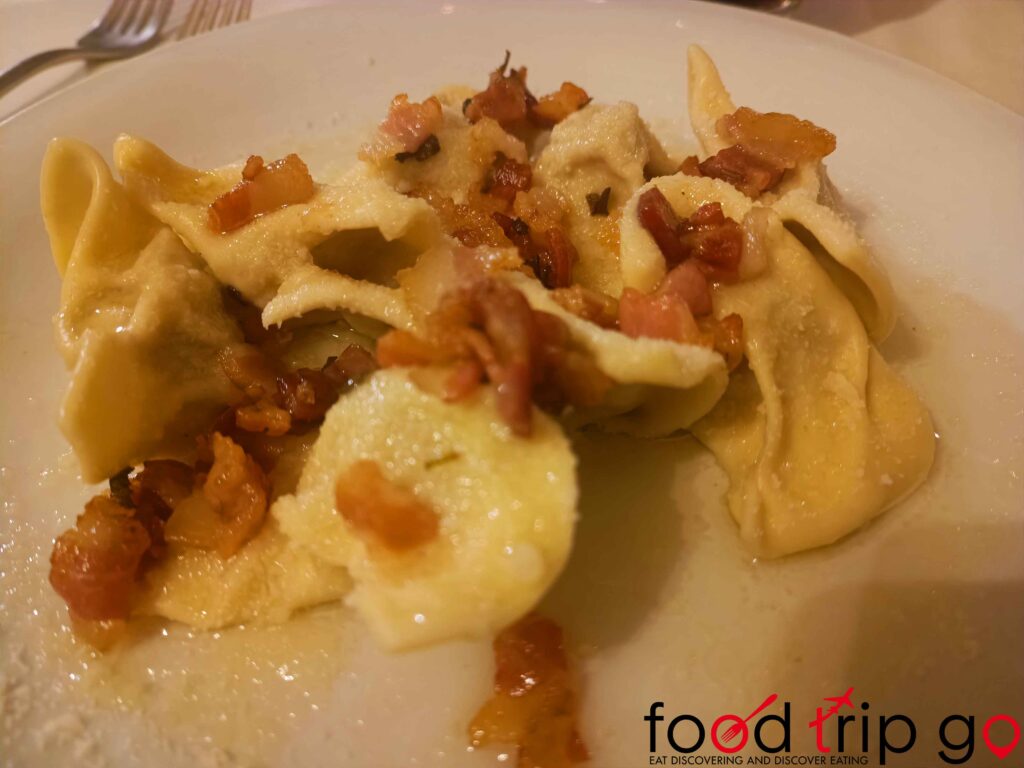

What to see in Bergamo
Bergamo Cathedral, Basilica of Santa Maria Maggiore and Colleoni Chapel
The Cathedral of St. Alexander the Martyr embodies centuries of history and spirituality. Its patron saint, St. Alexander, protects citizens from the height of his majestic figure.
The Basilica of Santa Maria Maggiore in Bergamo, built in thanksgiving for protection from the plague in 1137, is a historical and cultural icon of the city. The building, enriched over the centuries with frescoes, stucco and wooden inlays by Lorenzo Lotto, offers a spectacle of artistic and religious splendor. The peculiarity of the absence of a central entrance and facade makes it unique, while the side doors, guarded by majestic marble lions, introduce visitors to a context of sacredness and ancient tradition.
Linked to the city’s history, the figure of Bartolomeo Colleoni, a famous condottiere, left an indelible imprint on the Bergamo area, evidenced by his chapel and numerous other monuments. Although his personality was strong and decisive, his artistic and architectural legacy continues to inspire and fascinate visitors to Bergamo.
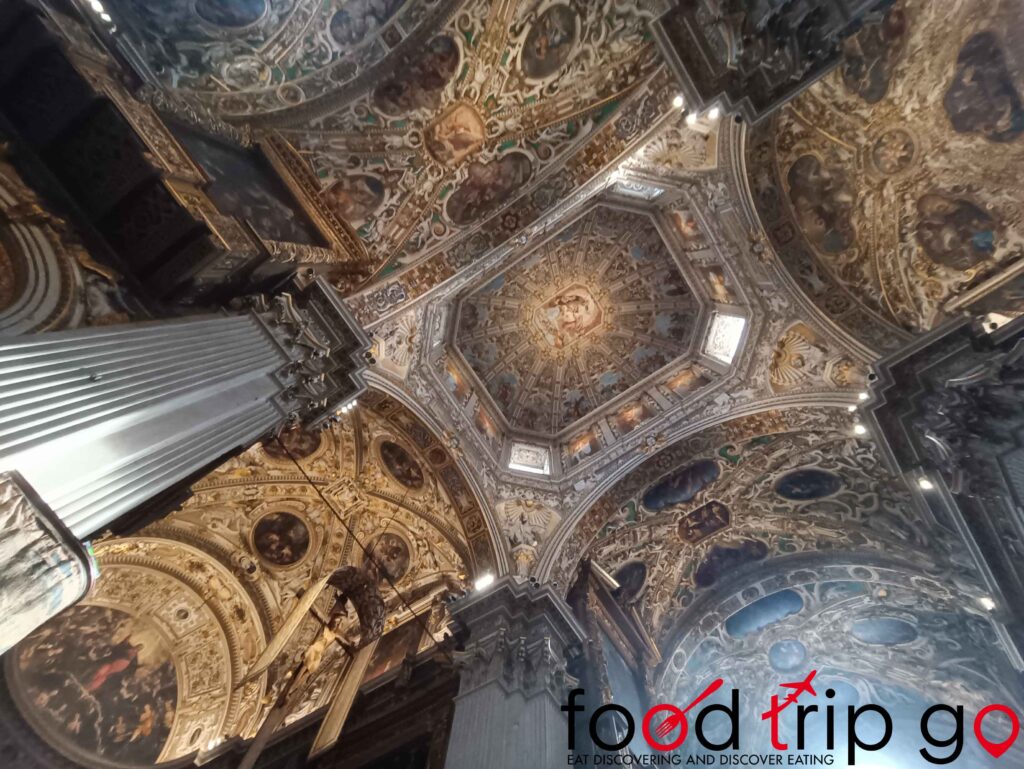
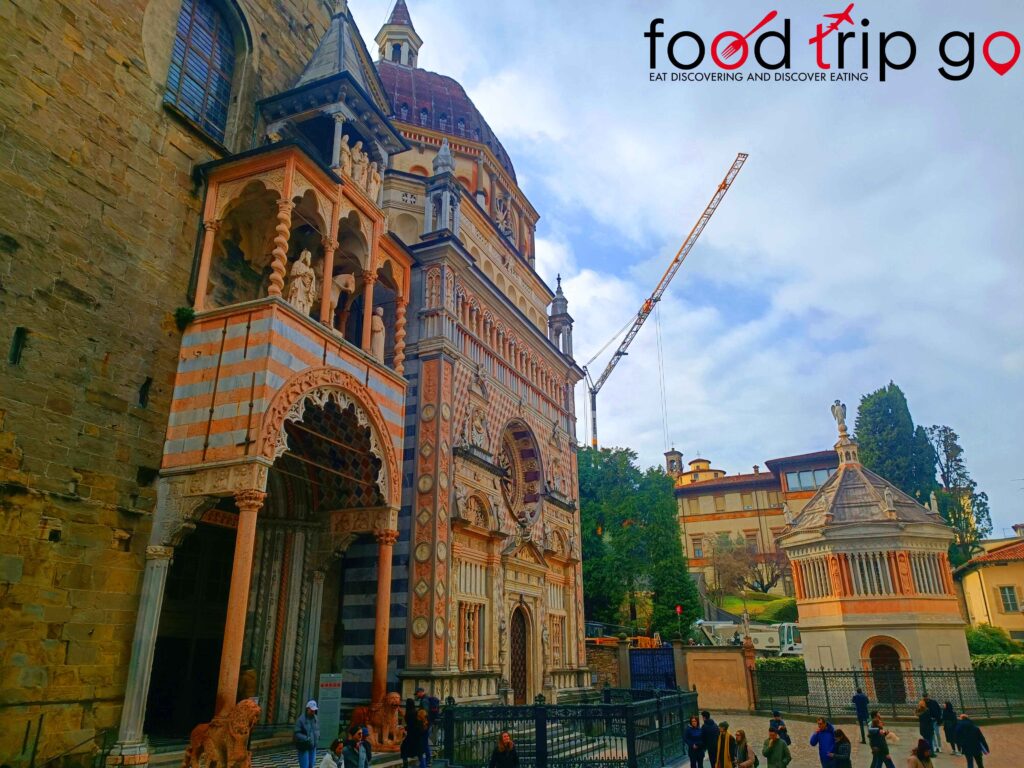
Campanone, Palazzo del Podestà, Palazzo della Ragione and Contarini Fountain
The Civic Tower, known as the Campanone, is an iconic monument in Bergamo Alta that offers panoramic views of the city and the Orobian Pre-Alps. This medieval tower houses a concert of three bells, including the largest bell in Lombardy. Located next to the Palazzo della Ragione and the Palazzo del Podestà, the tower is easily accessible by a modern elevator.
The Palazzo del Podestà, located in Piazza Vecchia in the upper city, is a historic architectural gem that houses the Museo del Cinquecento. Built in the 12th century by the Suardi family, this palace tells the rich medieval and Renaissance history of Bergamo. Its frescoed rooms, including frescoes by Bramante, and its central location make it a must-see for those visiting Bergamo.
The Palazzo della Ragione offers a fascinating view of Bergamo’s history and beauty, with interiors chronicling centuries of culture and art. Originally the seat of public assemblies, during Venetian rule it became a court of law, preserving frescoes recounting judicial disputes of the time. Outside, in the loggia below, is a gnomon, a sundial dating from 1798, which continues to accurately mark local noon and the date.
The Contarini Fountain, a Zandobbio marble octagon in the center of Piazza Vecchia, is surrounded by statues of sphinxes, snakes, and lions. Originally used as a water supply for domestic use, it is now an aesthetic focal point of the square.
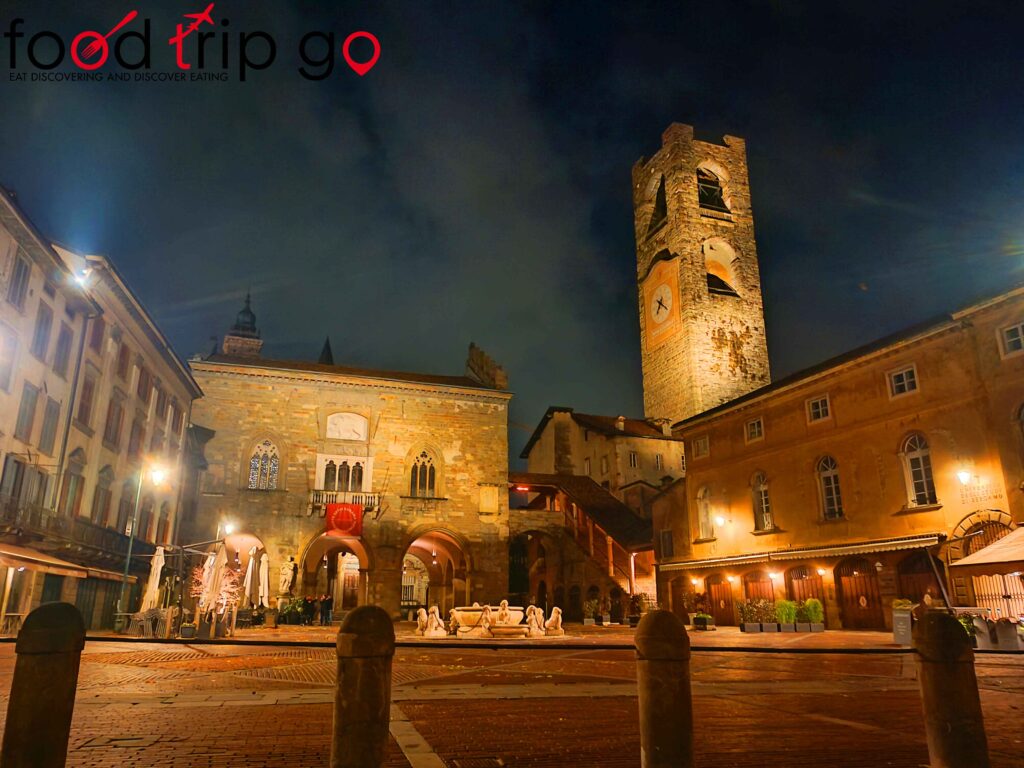
Lavatory, St. James’ Gate, Fortress and Church of St. Michael at the White Well
The Lavatoio is a historical testimony to ancient local traditions. This fascinating corner is an evocative stop for travelers who wish to immerse themselves in Bergamo’s daily history.
Porta San Giacomo, the historic entrance to Bergamo’s Città Alta, is an iconic white marble structure from Zandobbio, easily visible along Viale Vittorio Emanuele. Featuring a triangular pediment and classical half-
columns, it is a landmark for special events because of its ability to project colored lights. It offers breathtaking views of the Venetian fortifications and the Lower Town all the way to the Apennines.
The Rocca is a place beloved by Bergamascans for its extraordinary 360-degree panoramic views. With its traces of 14th-century origin, it offers an immersive experience in the region’s military history, with routes that include the patrol walkway and the bomber’s house, now home to the Museum of the Nineteenth Century. This route relives the transformations of Bergamo from the Ancien Regime to the Unification of Italy, with a focus on the Risorgimento climate and the stories of the heroic Bergamasks of the Thousand who joined Garibaldi. The church of San Michele al Pozzo Bianco houses ancient frescoes and is a valuable lesson in local art history. Originally from the Lombard period, 20th-century restorations revealed works by various artists, including a 13th-century Byzantine painting, and the rectangular structure features three chapels, one of which is accessible by a staircase leading to the crypt below.
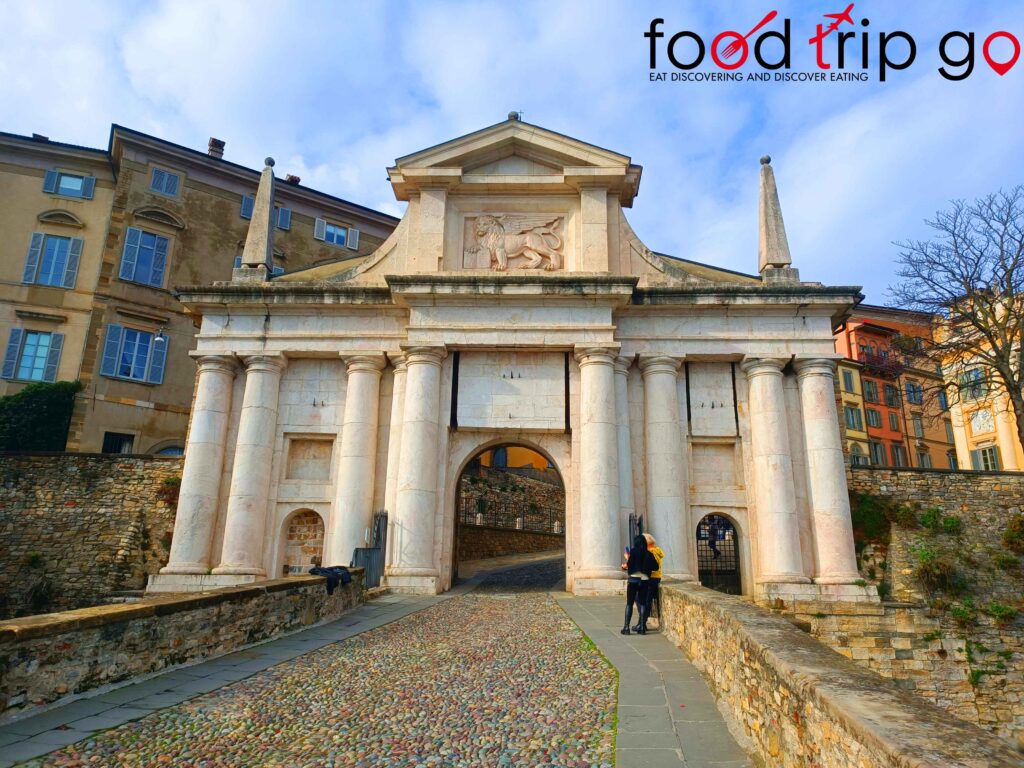
The Genuineness of Bergamo: Where History, Taste and Beauty Blend Harmoniously
Bergamo proves to be an unparalleled destination for anyone wishing to immerse themselves in a complete experience among Italian culture, art and gastronomy. With its typical dishes that embody centuries of culinary tradition, historical monuments that narrate the city’s and past vicendas, and breathtaking views from its fortresses and towers, Bergamo enchants and captivates at every turn.
Not just a journey for the palate, but a true journey through time, where history and taste blend harmoniously. Walking the streets of Bergamo means discovering a multifaceted city that knows how to amaze and conquer anyone who visits it. From Città Alta to Città Bassa, each neighborhood reveals a unique and charming atmosphere, enriched by the warm welcome of its inhabitants. Thanks to its gastronomic excellence, architectural wonders and natural beauty, Bergamo confirms itself as an essential stop for lovers of authentic travel in search of genuine tastes.